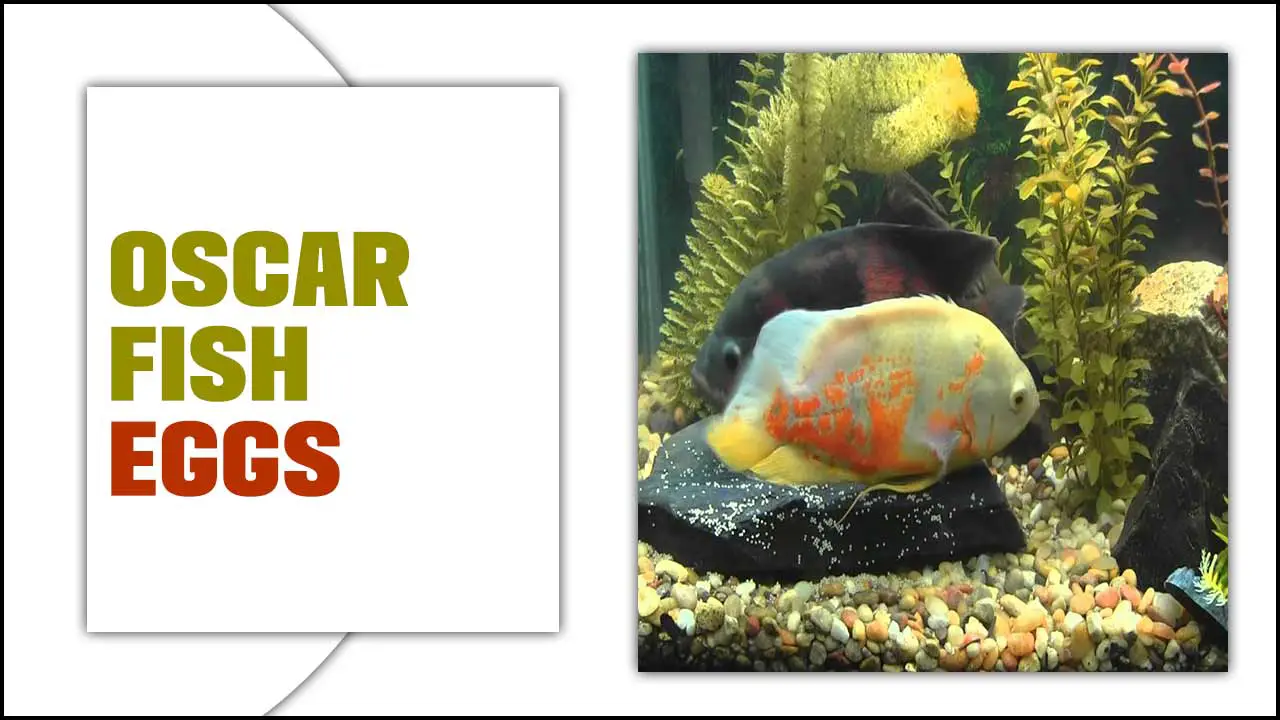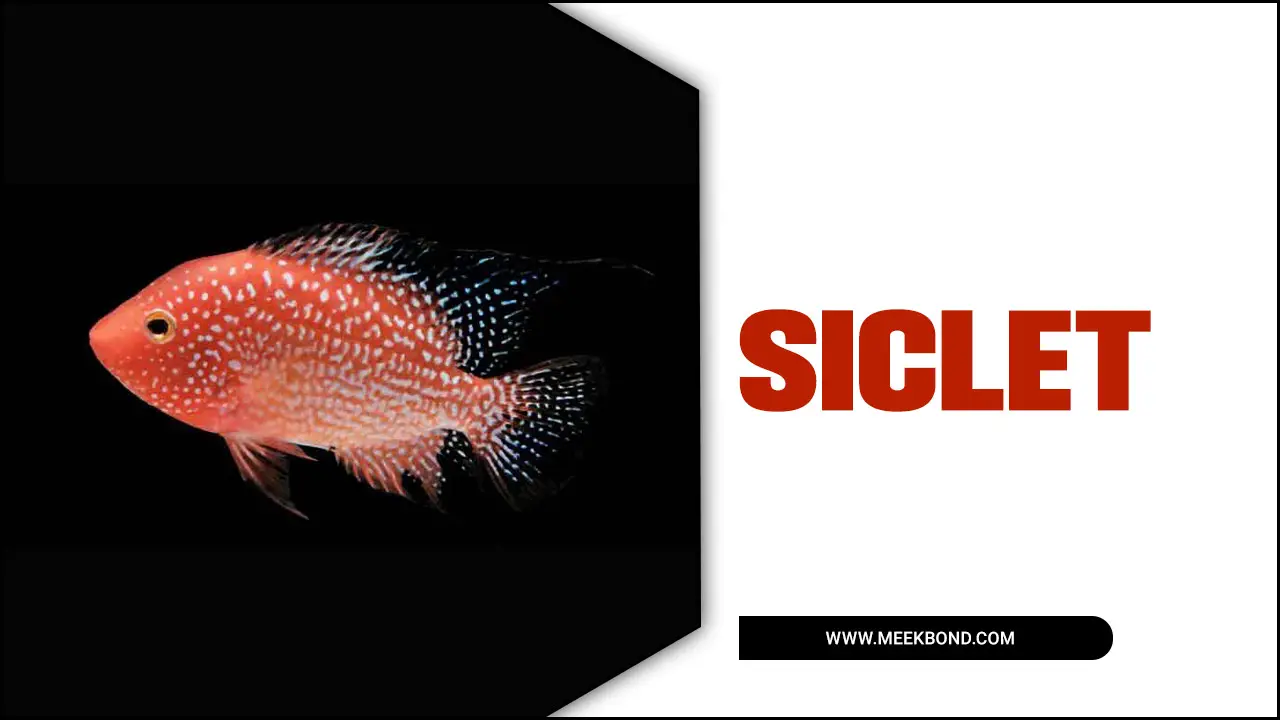Pea puffers are popular aquarium fish known for their unique appearance and behaviour. These small freshwater fish are native to Southeast Asia and are often kept in home aquariums because of their size and quirky personalities.
One common question among pea puffer owners is whether these fish can puff up like their larger pufferfish counterparts. Here we will explore the reasons behind the puffing phenomenon in pea puffers, including instinctive responses to stress, symptoms of disease or injury, territorial behaviour, and changes in water quality. We will also discuss do pea puffers puff up and potential solutions for reducing stress and treatment for illness or injury. Join us as we debunk myths and reveal the reality behind pea puffers’ puffing habits.
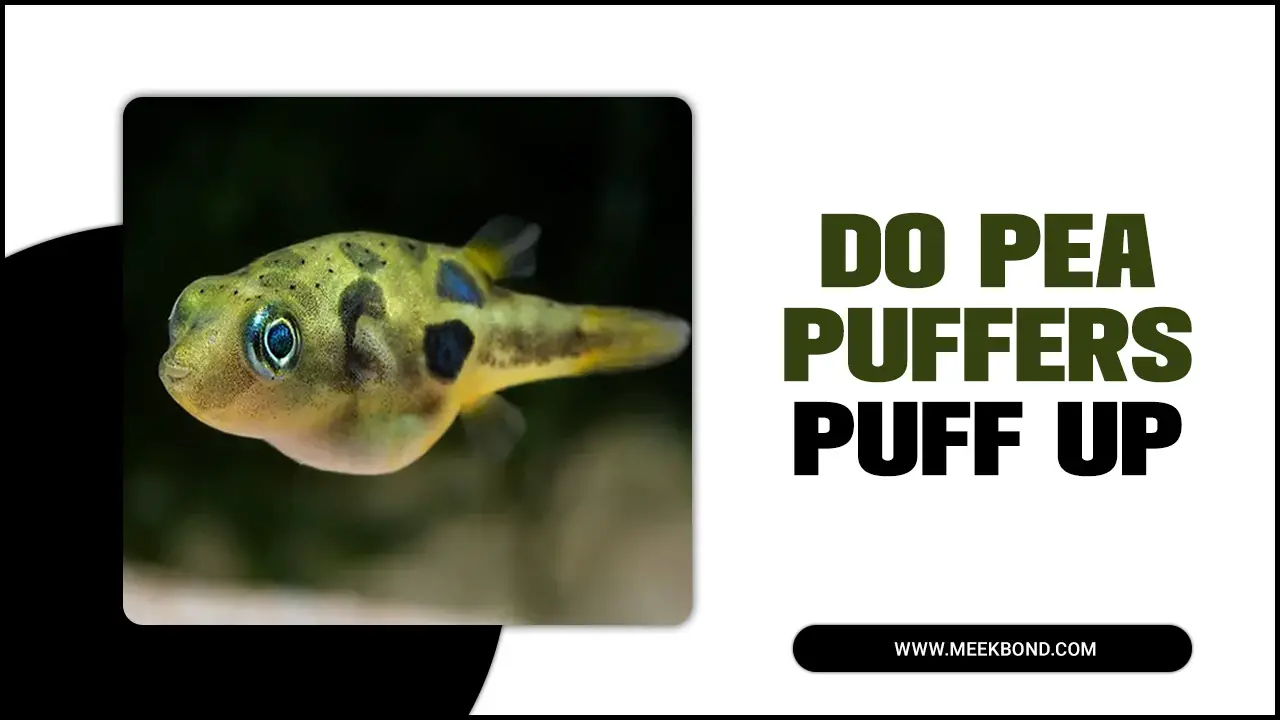
Do Pea Puffers Puff Up – Reasons And Treatment
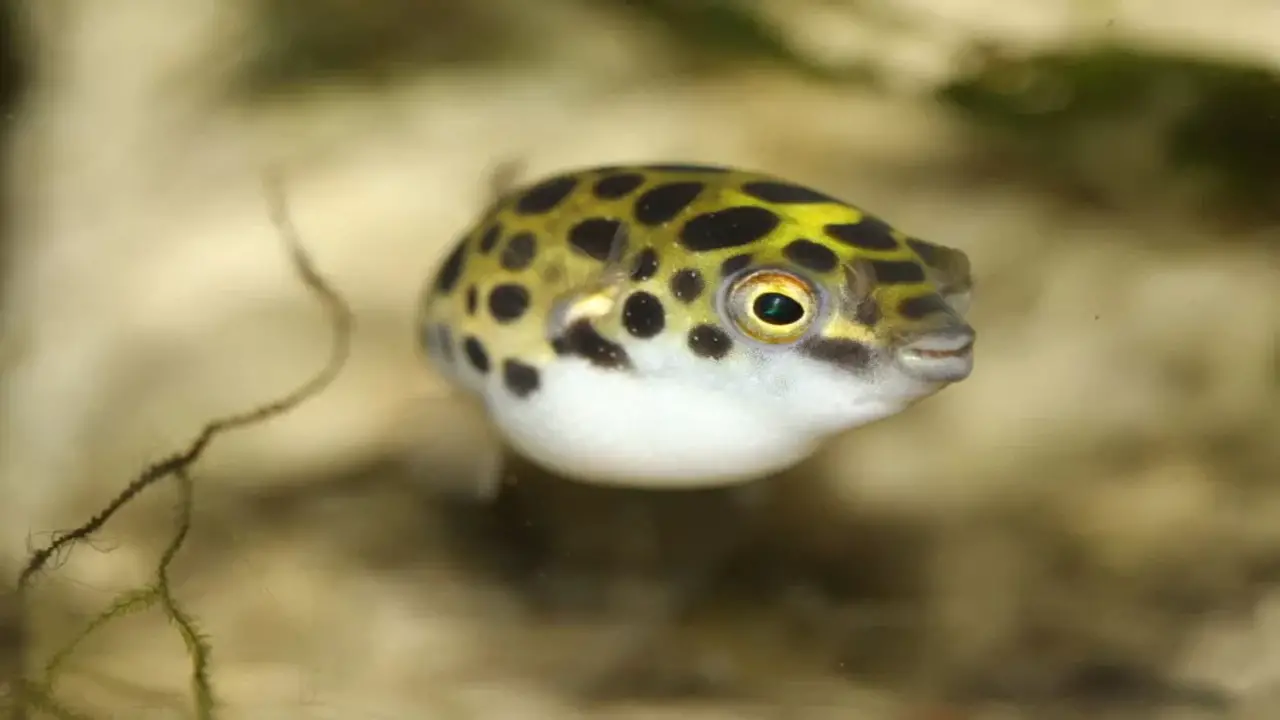
Pea puffers have a unique defense mechanism where they puff up to protect themselves. However, puffing up can also signify stress, illness, or injury in these fish. To effectively treat puffing up, it is important first to identify the underlying cause and address it accordingly.
Providing a clean and well-maintained aquarium environment with proper water quality can help prevent stress-related puffing up. If the puffing up persists or is accompanied by other symptoms, it is advisable to consult a veterinarian for further guidance. Remember, the health and well-being of your pea puffer should always be a top priority. Scroll down to get in details on do pea puffers puff up.
Instinctive Response To Stress
Pea puffers exhibit an instinctive response to stress, danger, or illness by puffing up. This behaviour helps them appear larger and more intimidating to potential environmental threats. However, if your pea puffer frequently puffs up or does so for extended periods, it may indicate underlying health issues.
To alleviate stress and prevent excessive puffing, it is important to maintain proper tank conditions, including appropriate water temperature and quality. If you are concerned about your pea puffer’s puffing behavior, it is advisable to consult with a veterinarian or experienced fish keeper for guidance.
Symptoms Of Disease Or Injury
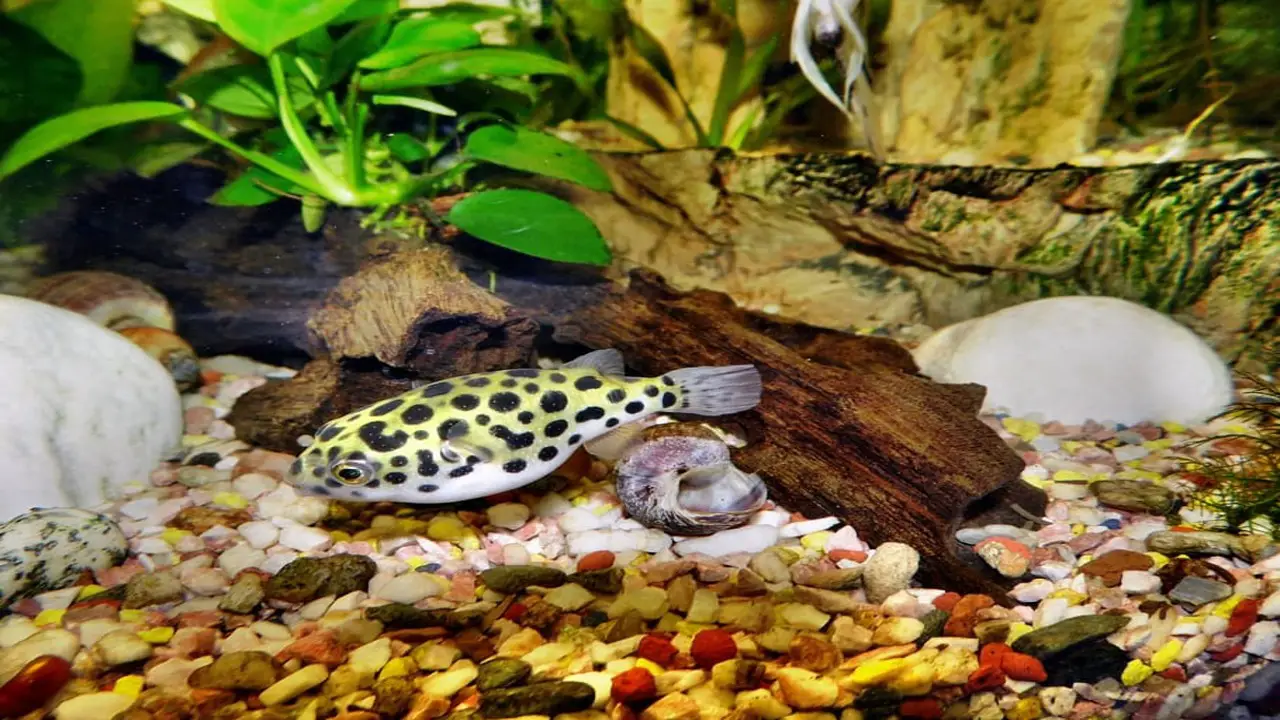
Pea puffers may exhibit puffing-up behavior when experiencing stress, illness, or injury. This behavior can indicate bacterial or fungal infections, parasitic infestations, or physical trauma. Along with puffing up, other symptoms of disease or injury in pea puffers may include loss of appetite, lethargy, and abnormal swimming behavior.
It is crucial to promptly diagnose and treat these conditions to ensure the puffer’s health. To prevent disease and injury in pea puffers, it is important to maintain proper tank maintenance and provide a suitable diet. Seeking guidance from a veterinarian or experienced aquarist is recommended for the well-being of your puffer.
Changes In Water Quality
Maintaining appropriate water quality is crucial for the health and well-being of pea puffers. Poor water quality can lead to stress, which may cause these puffers to puff up. To prevent this, regular water changes and proper filtration are essential.
It is also important to regularly test water parameters such as pH and ammonia levels. Adding live plants and natural decor helps create a healthy environment. Despite efforts to improve water quality, seeking veterinary care is recommended if puffing up continues. By prioritizing water quality, pea puffers can thrive in their aquarium habitat.
Territorial Behavior
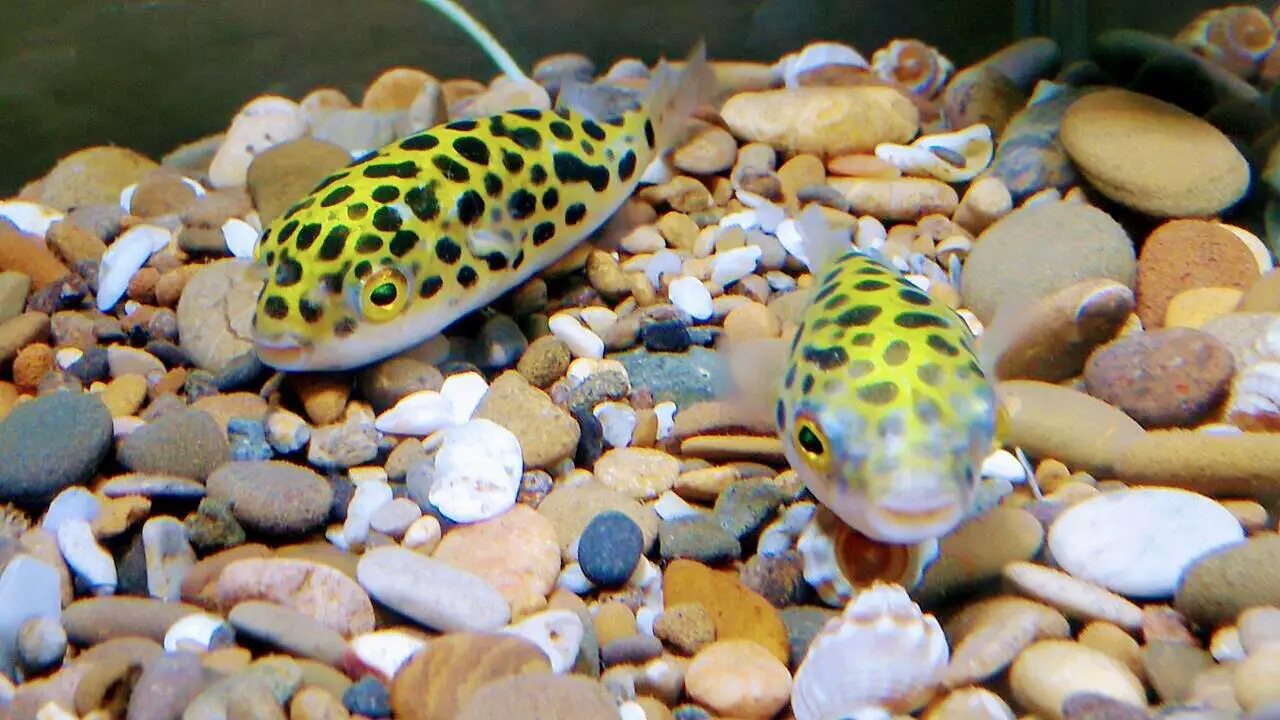
Regarding pea puffers, territorial behavior is a common occurrence. These small fish may puff up to assert their dominance and protect their space or mate. It can also display aggression towards other fish in the tank. To prevent conflicts and stress among tank mates, providing enough space and hiding spots is important.
If a pea puffer consistently puffs up and shows signs of stress, it might be necessary to remove them from the tank. Consulting with a veterinarian or experienced aquarium specialist can help identify any underlying health or behavioral issues.
Potential Solutions For Reducing Stress
Providing a comfortable environment with hiding spaces can help reduce stress in pea puffers. It’s important to ensure that they have ample swimming space and avoid overcrowding, as this can cause stress. Additionally, sudden changes in water conditions or introducing incompatible tank mates should be avoided.
Feeding a varied diet and providing toys can also help alleviate stress levels. However, if your pea puffer continues to puff up persistently, it may indicate an underlying health issue, and consulting with a veterinarian is recommended.
Treatment For Illness Or Injury

Puffers may puff up as a response to stress, discomfort, or illness. Before providing treatment, it is crucial to identify the underlying cause. Common treatments include water changes, medication, and isolation. Consulting a veterinarian experienced in exotic fish can be beneficial for proper diagnosis and treatment.
Additionally, creating a comfortable and stress-free environment can help prevent puffing up in the future. By addressing the root cause and providing appropriate care, pufferfish can recover from illness or injury and thrive in their aquarium habitat.
Appropriate Tank Set-Up
Pea puffers thrive in a well-maintained aquarium with proper filtration, lighting, and temperature control. Creating an ideal habitat involves setting up a planted tank with hiding spots and ample swimming space. Removing sharp edges and objects that could harm the puffer if they puff up is crucial.
A varied diet and regular water changes also contribute to a healthy tank environment. Adequate tank set-up is crucial in preventing stress, leading to puffing up as a defensive mechanism. By prioritizing their tank’s conditions, pea puffer fish can live a happy and healthy life.
How Can You Tell If A Pea Puffer Is Stressed?

Pea Puffers, or Dwarf Puffers, are small and colourful freshwater fish that can make a delightful addition to aquariums. Like any living creature, they can experience stress, negatively impacting their health and well-being. Several signs can indicate if a Pea Puffer is stressed.
One of the most common signs is a change in behavior. Stressed Pea Puffers may become more reclusive, hiding in plants or decorations in the tank and avoiding interaction with other fish or humans.
They may also exhibit aggressive behaviour towards tank mates or become excessively territorial. Another sign of stress is loss of appetite. If a Pea Puffer suddenly stops eating or shows reduced interest in food, it could be a sign of stress.
Physical changes such as pale coloration or fin clamping can also indicate stress. Aquarium owners need to monitor their Pea Puffers closely and provide them with a suitable environment to minimize stress and promote their overall well-being.
How Can You Tell If A Pea Puffer Is Healthy?
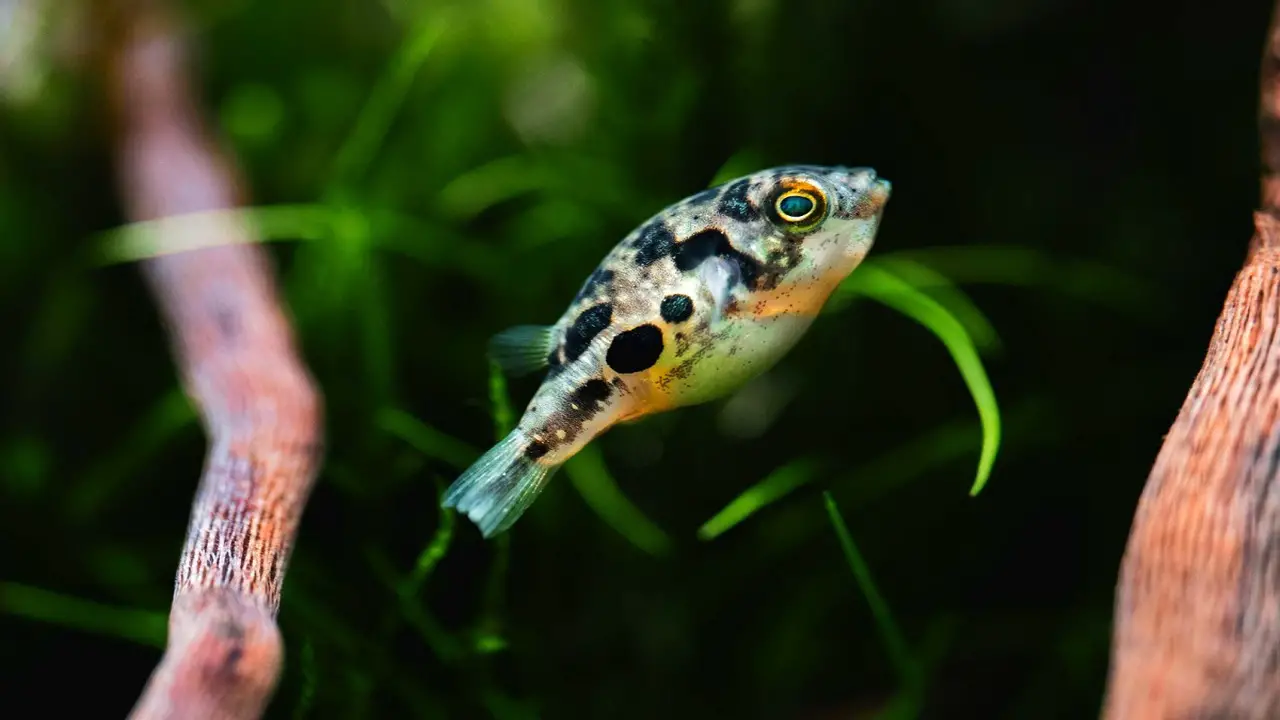
Keeping a Pea Puffer healthy requires regularly monitoring its behavior and activity level. Observe the fish for clear eyes, smooth skin, and any physical abnormalities or deformities. Ensure it has a varied and balanced diet that meets its nutritional requirements, and ensure its environment is clean and well-maintained.
It’s important to provide access to clean water, regularly check water parameters, and perform regular water changes to maintain optimal conditions. Additionally, maintaining appropriate tank mates is crucial for the overall health and well-being of the Pea Puffer. A Pea Puffer can live up to five years in captivity with proper care.
What Is The Lifespan Of A Pea Puffer?
Pea Puffers, also known as Dwarf Puffers, have an average lifespan of 3 to 5 years when kept in optimal conditions. These small and colorful freshwater fish are popular for aquarium enthusiasts due to their unique appearance and entertaining behavior.
To ensure the longevity of a Pea Puffer, it is important to provide them with a well-maintained tank that mimics their natural habitat. This includes maintaining proper water parameters, providing a varied diet consisting of live or frozen foods, and offering plenty of hiding spots and plants for them to explore. These fascinating little creatures can bring joy to your aquarium for several years with proper care and attention.
Pea Puffer Care Essentials
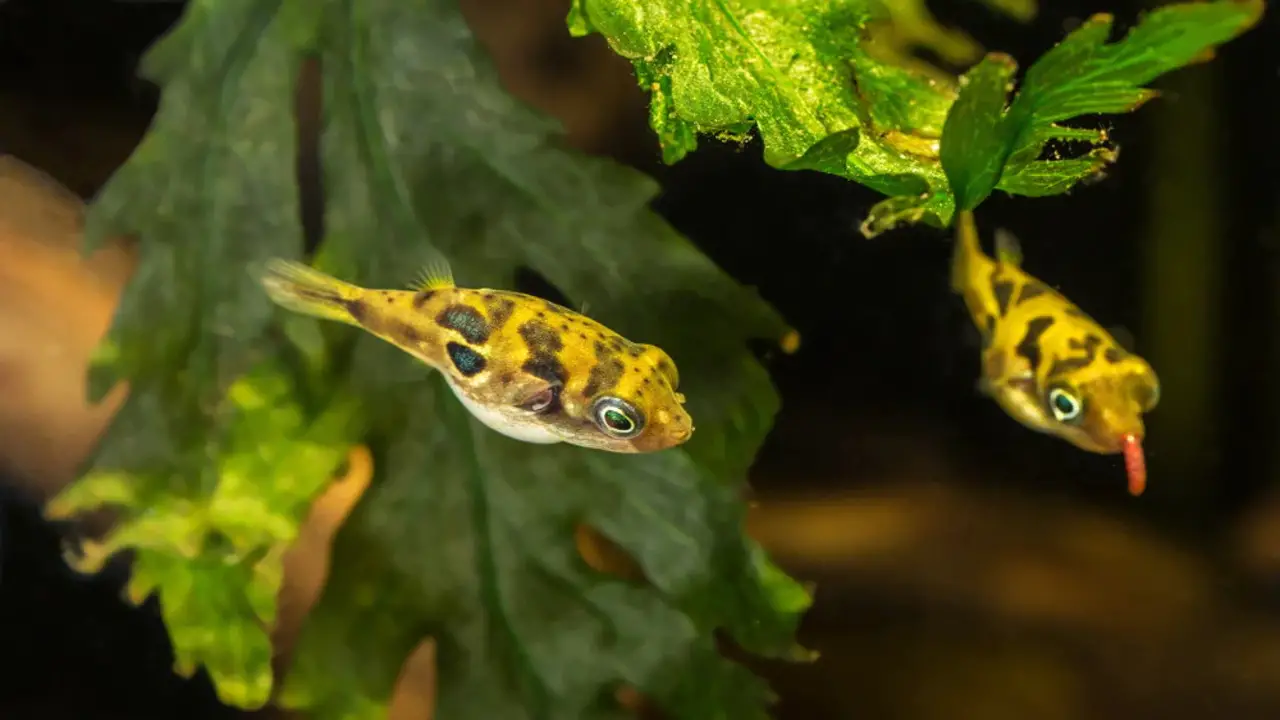
Pea puffers, dwarf puffers, are a popular type of freshwater tropical fish. Unlike other pufferfish species, they do not “puff up” when threatened. To ensure the health and well-being of these small-sized fish, it is essential to provide them with appropriate tank sizes and maintain optimal water quality.
Pea puffers require a varied diet that includes live or frozen foods like bloodworms, brine shrimp, and small snails. When selecting tank mates, it’s important to consider their aggressive behaviour towards other fish. Regular maintenance, including water changes and monitoring water parameters, is crucial for the overall health of pea puffers.
Habitat And Aquarium Requirements
To ensure the well-being of pea puffers in captivity, it is important to provide them with suitable habitats and meet their aquarium requirements. These dwarf puffers thrive in a minimum tank size of 5 gallons, which should have ample hiding places to feel secure.
They particularly enjoy heavily planted tanks and driftwood that mimic their natural habitat. A sandy substrate is recommended to cater to their burrowing instincts and prevent any potential injury to their delicate bodies. Maintaining water temperature between 75-80°F and pH between 7.0-8.0 is crucial. Additionally, using a small filter and regular water changes are essential for maintaining optimal water quality in the aquarium.
Feeding Guidelines For Pea Puffers
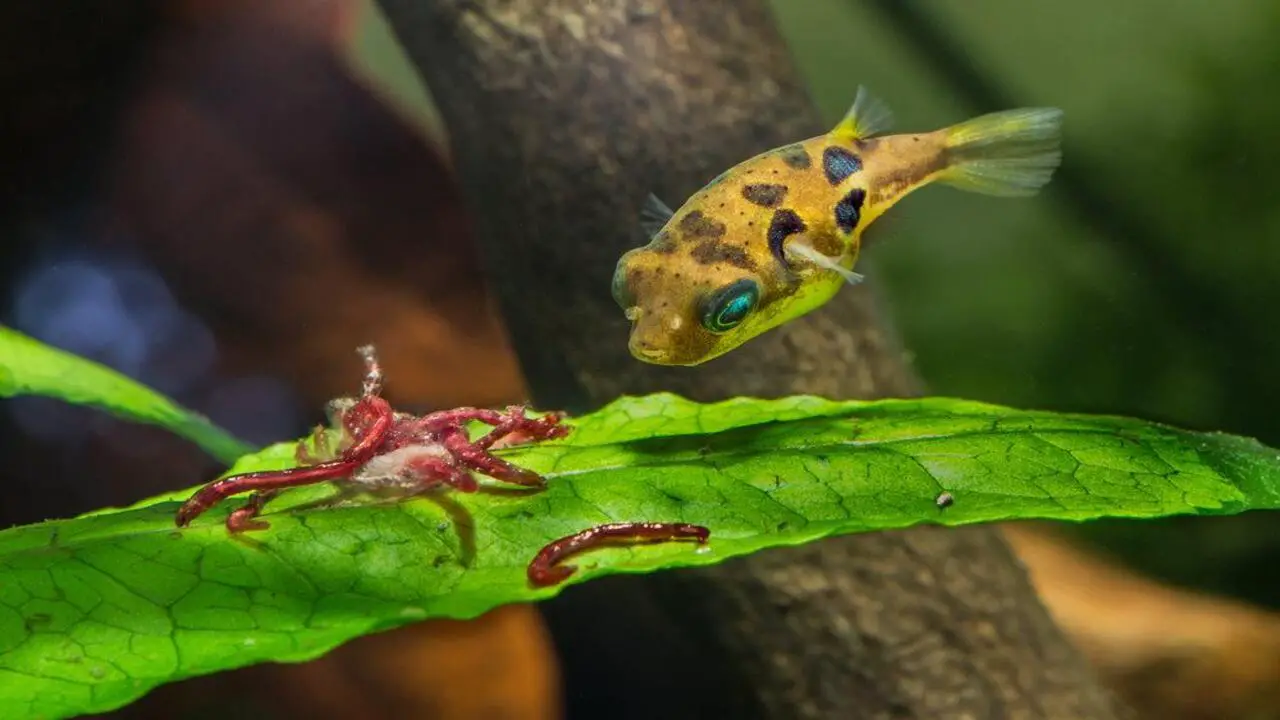
To ensure the health and vitality of your pea puffer, it’s important to follow proper feeding guidelines. As carnivorous creatures, pea puffers require a high-protein diet. To prevent overeating and bloating, feeding them small meals multiple times a day is recommended.
Live or frozen foods like bloodworms, brine shrimp, and daphnia are excellent choices for their diet. Avoid feeding them dry foods, as these can lead to digestive issues. By implementing these feeding habits, you can maintain the well-being of your pea puffer and ensure they thrive in their aquarium habitat.
Conclusion
It is important to understand that pea puffers do not actually “puff up” like other fish species. The behaviour commonly called “puffing up” in pea puffers is more of an instinctive response to stress or a method of establishing territory. It is crucial to provide a suitable tank environment and proper care to ensure the well-being of your pea puffer.
Regular monitoring of water quality, addressing any signs of disease or injury promptly, and creating a stress-free habitat are essential for maintaining their health. Additionally, providing a varied and balanced diet is vital for their nutrition. By following these care essentials, you can ensure that your pea puffer lives a healthy and happy life in your aquarium. We hope you now understand do pea puffers puff up.
Frequently Asked Questions
Can Dwarf Puffers Puff Up?
Dwarf puffers, also known as pea puffers, can puff up as a defense mechanism against predators. However, it is important to note that this behavior can be stressful for the puffer and should not be encouraged or provoked. While dwarf puffers are generally peaceful, they can become aggressive if threatened by other fish.
Is It Stressful For Puffer Fish To Puff Up?
Puffing up can be stressful for puffer fish as it requires them to take in large amounts of water or air, which can be harmful. It is a defense mechanism handy to intimidate predators. To avoid stressing your puffer fish, provide them with proper care and environment.
How Do I Know If My Pea Puffer Is Stressed?
Signs of stress in pea puffers include lethargy, loss of appetite, and hiding. Aggressive behavior towards other fish or objects in the tank can also indicate stress. Ensure suitable water quality and consistent feeding. Seek advice if signs persist.
Can Freshwater Puffers Puff?
Freshwater puffers can puff up as a defense mechanism. Their specialised muscles allow them to inflate their bodies with water or air, making them larger and harder to swallow for predators. However, it’s important to handle them carefully as excessive puffing or mishandling can harm them.
What Is A Pea Puffer?
A pea puffer is a small freshwater fish from the Tetraodontidae family, commonly known as dwarf puffers. These unique fish are around one inch in length and are admired by aquarium enthusiasts for their appearance and behavior. With a carnivorous diet, they require live or frozen foods to thrive.

Aquarium passion is all about connecting with the aquatic life and providing education to the public on the importance of these creatures. We showcase a wide variety of marine life through our exhibits as well as working with schools to provide unique learning opportunities for students of all ages.

